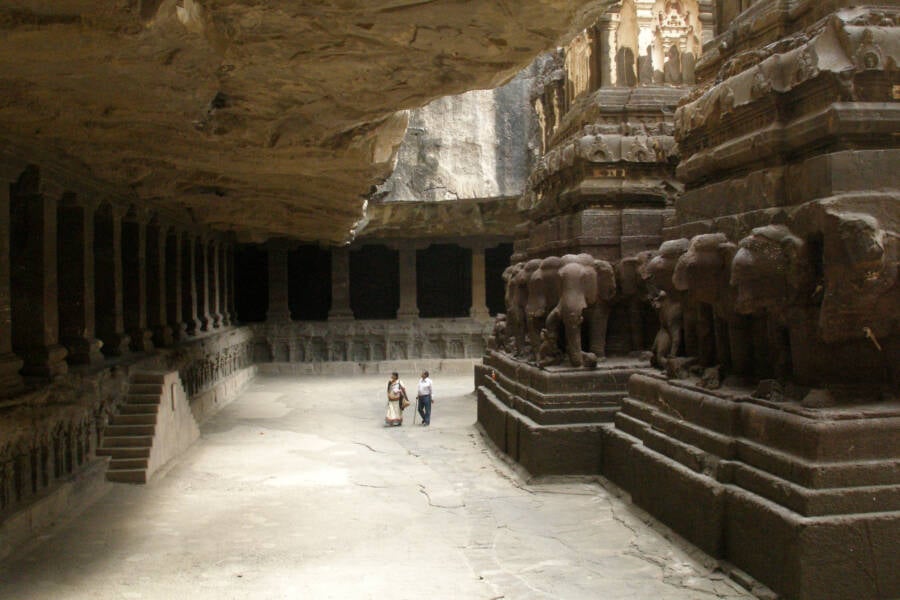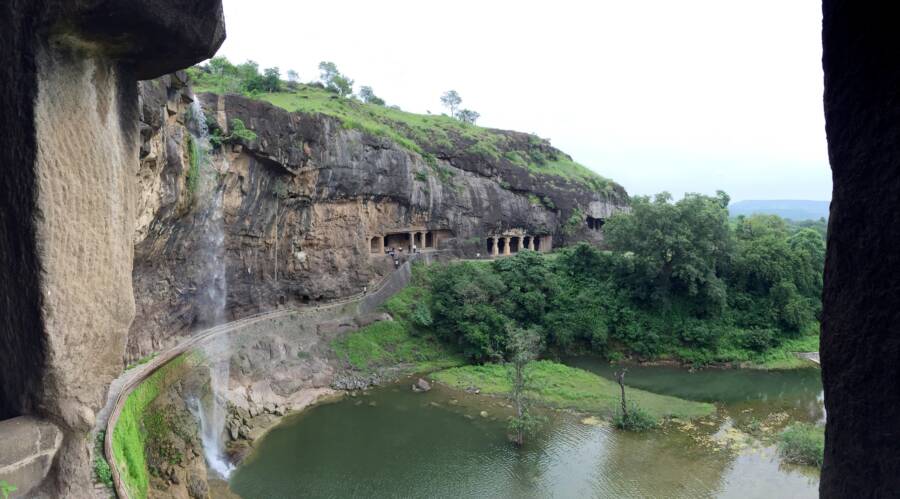Ellora Caves In India

Wikimedia CommonsIndia’s Ellora Caves have a mix of Buddhist, Hindu, and Jain architectural styles.
The Ellora Caves are a series of 34 rock-cut temples in western India located near the village of Ellora. Comprising a total 1.2 miles, each of these temples were carved directly into the basaltic cliffs with intricate facades.
Per the Encyclopedia Britannica, there are a mix of temples found inside Ellora Caves. In total, there are 12 Buddhist caves dating from around 200 B.C.E. to 600 C.E., 17 Hindu temples at the center of the caves dating from 500 to 900 C.E., and five Jain temples dating from about 800 to 1000 C.E.
The style and design of these temple-caves often aligns with the culture of the people who constructed them. The Hindu caves, for example, have much more complex designs than the Buddhist caves.

Wikimedia Commons Ellora Caves as seen from the outside, where they have been dug into the basaltic rock face.
Most of these cave-temples were constructed by carving directly horizontally into the side of the basaltic rock face — except for one, the Kailasa temple, which is named for the mountain in the Kailasa Range of the Himalayas where the Hindu god Shiva is said to reside.
The Kailasa temple is the only one of the 34 temples inside the Ellora Caves to have been constructed by digging directly downward from a slope, allowing plenty of natural sunlight to filter into the cave.
It’s clear that the Ellora Caves were meant to serve a practical purpose for the devout people who entered, as several temples also contain carved sleeping cells where itinerant monks could stay.
In 1983, the Ellora Caves were designated a UNESCO World Heritage Site.





